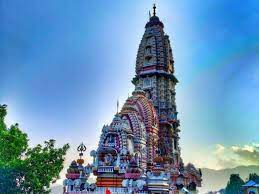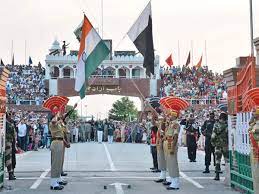FROM SACRIFICE TO RESURRECTION

Christianity
is one of the world’s major religions, and at the heart of its belief lies the
story of Jesus Christ—his life, death, and resurrection. Among the many holy
days Christians observe, Good Friday and Easter Sunday are two of the most
significant. Although closely linked in the timeline of events known as the
Passion of Christ, these two days mark contrasting moments—one of deep sorrow
and mourning, the other of great joy and celebration.
GOOD FRIDAY: A DAY OF MOURNING
Good Friday
is observed on the Friday before Easter Sunday, and it commemorates the
crucifixion and death of Jesus Christ. It is a solemn day that reflects on the
immense suffering Jesus endured at the hands of the Roman authorities and the
betrayal by Judas Iscariot. According to the Christian faith, Jesus was
crucified at Golgotha (also called Calvary) outside the walls of Jerusalem,
sometime around AD 30–33.
WHY IS IT
CALLED 'GOOD' FRIDAY?
The name
“Good Friday” may seem contradictory, given the painful events it commemorates.
However, the term “Good” is interpreted by many Christians to mean holy or
pious. Some also see it as “good” because the death of Jesus was part of God's
plan for the salvation of mankind. Through his suffering and sacrifice, Jesus
is believed to have atoned for the sins of humanity, opening the path to
eternal life for believers.
HOW IS
GOOD FRIDAY OBSERVED?
Good Friday
is a day of mourning, fasting, and prayer. In many Christian traditions, it is
observed with:
Church
services that include readings from the Passion narratives—the Biblical account
of Jesus’ betrayal, trial, and crucifixion. The Stations of the Cross, a
devotional practice that involves moving through 14 stations representing
significant events from Jesus’ last day. Silent reflection and penitence, with
many churches stripped of decorations, and altars covered in black or left
bare. In some places, passion plays or reenactments of the crucifixion are
performed to help believers visualize the suffering of Christ. In Roman Catholic, Anglican, and some
Protestant churches, Holy Communion may be distributed, but Mass is not
celebrated on this day.
Some
traditions also hold three-hour services from noon to 3 p.m., representing the
hours Jesus hung on the cross. In countries like the Philippines, Spain,
and parts of Latin America, public processions and rituals are held, where
people may even voluntarily undergo forms of suffering in remembrance of Jesus’
pain. Good Friday is a day of fasting and abstinence, particularly in Roman
Catholic, Orthodox, and some Protestant traditions. The idea is to focus on
Jesus’ suffering and to practice self-discipline and humility.
EASTER SUNDAY: A DAY OF CELEBRATION
In contrast to the somber tone of Good Friday, Easter Sunday is the most joyous day in the Christian calendar. It commemorates the resurrection of Jesus Christ from the dead, three days after his crucifixion. According to the Gospels, women followers of Jesus visited his tomb on the third day, only to find it empty. Jesus had risen, just as he had foretold.
THE SIGNIFICANCE OF EASTER
Easter is the cornerstone of Christian faith. The resurrection is seen as proof of Jesus' divinity and the ultimate triumph of life over death, good over evil, and hope over despair. It affirms the promise of eternal life for all who believe in him. The Apostle Paul wrote in 1 Corinthians 15:17, “If Christ has not been raised, your faith is futile.” In essence, Easter is what makes Christianity what it is.
HOW IS EASTER CELEBRATED?
Easter is marked with rejoicing, songs of victory, and the return of festive decorations in churches. Some of the common traditions and celebrations include:
Sunrise services symbolize the arrival of the women at Jesus’ tomb and the beginning of a new day. Joyful church services filled with music, flowers (especially lilies), and the singing of “Alleluia,” which was often omitted during Lent. Easter egg hunts, a popular tradition, especially among children. The egg, an ancient symbol of new life, represents Jesus’ emergence from the tomb. Easter feasts with family and friends, breaking the Lenten fast, and celebrating with festive foods such as lamb, ham, breads, and desserts.
Easter parades, particularly in Western countries like the United States, where people wear their best clothes, are often called "Easter finery." In Orthodox Christian traditions, which often celebrate Easter on a different date due to their use of the Julian calendar, the celebration begins with midnight liturgies and processions, followed by joyous feasts and the greeting, “Christ is Risen!” to which the response is “Truly, He is Risen!”
EASTER SUNDAY: A FEAST OF JOY AND ABUNDANCE
Easter Sunday marks the end of Lent and is celebrated with elaborate feasts and festive dishes. The meals reflect the joy and abundance of the resurrection and the renewal of life.
TRADITIONAL EASTER FOODS:
• Roast Lamb: One of the oldest Easter traditions, especially in Mediterranean cultures. Lamb symbolizes Jesus as the “Lamb of God.”
• Ham: A common centerpiece in Western countries like the U.S., symbolizing abundance and celebration.
• Easter Eggs: Both real and chocolate eggs represent new life and the empty tomb. Egg-decorating and egg hunts are popular activities.
• Simnel Cake: A fruit cake topped with marzipan balls (often 11 or 12), symbolizing the apostles.
• Braided Sweet Breads: Found in many cultures, these often include eggs baked into them and are sweetened with dried fruits or honey.
• Spring Vegetables and Salads: Celebrating the season, dishes include asparagus, carrots, peas, and fresh greens.
THE CONNECTION BETWEEN THE TWO DAYS
Though
different in tone and purpose, Good Friday and Easter Sunday are deeply
connected. They are two parts of the same narrative. One cannot understand the
joy of Easter without the sorrow of Good Friday. The pain and sacrifice of
Jesus’ crucifixion make the miracle of his resurrection even more meaningful.
Christians
around the world use this time not only to commemorate these historical and
spiritual events but also to reflect on personal renewal, faith, and the hope
that death is not the end.
You may like post

THE MOST BREATHTAKING TRAIN RIDES TO TAKE THIS FALL
Explore Autumn’s Best Rail Adventures Around the Globe

GOLDEN HOUR GETAWAYS
The Best Places to Watch the World’s Most Beautiful Sunsets








